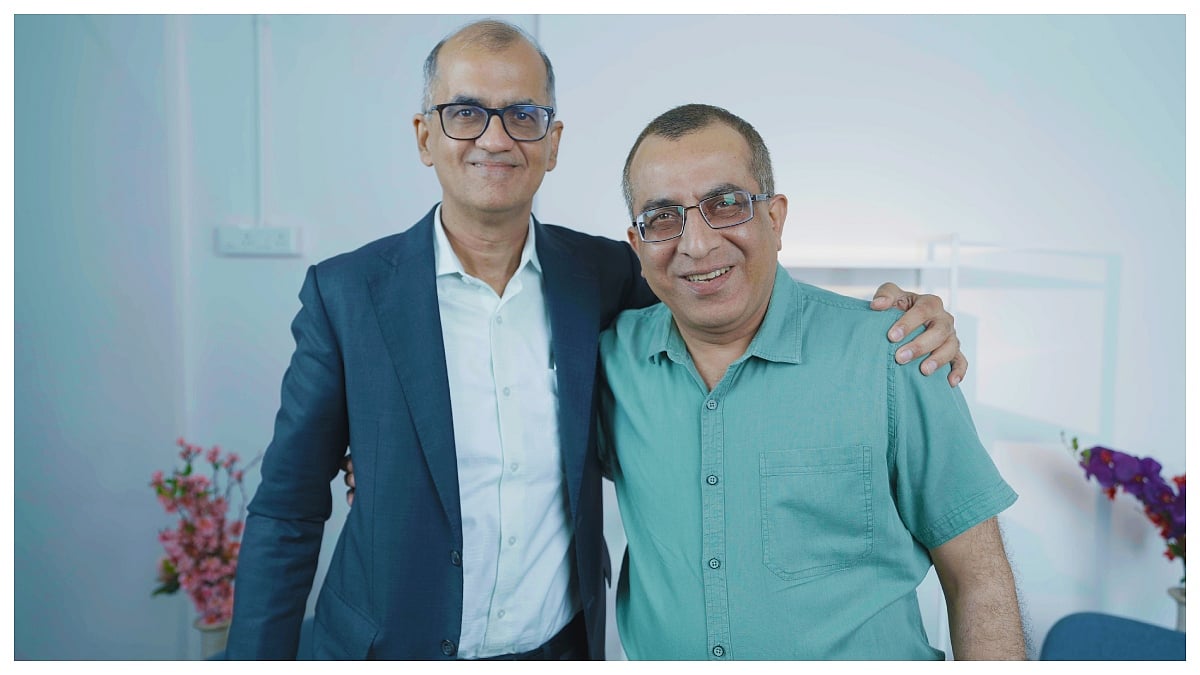From Scarcity To Abundance: Vikaas Sachdeva On The Evolving Landscape Of Indian Investment
Vikaas M Sachdeva, Co-Chair of the IVCA CAT III Council, joined Vivek Law on the Simple Hai! show to discuss the evolution of Indian investment.

The transformative journey of the Indian investment sector, the rise of mutual funds and the explosive growth of alternative investments - these formed the crux of the conversation between Vikaas Sachdeva, Co-Chair of the IVCA CAT III Council and veteran finance journalist Vivek Law on the Simple Hai! Show recently.
The mutual fund industry has seen tremendous growth over the years and Sachdeva broke down this evolution into three key stages:
The Guaranteed Returns Era: This early stage featured products like UTI and Morgan Stanley. While people invested and made money, there was a fundamental lack of understanding; mutual funds were often equated with stocks. This led to information asymmetry, with even "grey market premiums" running on NFOs (New Fund Offers).
Around 1997–98, institutions like Birla, ICICI, and HDFC began educating investors on mutual fund concepts. This period saw significant regulatory and taxation changes.
ALSO READ
Alignment and Campaign Success: The current phase, starting around 2016, marked the alignment of product, regulation and distribution structures. A major trigger was the "Mutual Funds Sahi Hai" campaign, which, despite initial resistance, saw phenomenal success, leading to a six fold growth in the industry in just ten years. At that time, there were approximately 10 crore SIP accounts, a stark contrast to the late 1990s when collecting a single Rs 5,000 application involved significant physical effort.
The Investor Maturity Curve
When questioned about the corresponding shift in investor behavior, Sachdeva noted that maturity was still variable. He quoted an informal survey which showed that if an investor entered through the debt fund route, the average tenure was about 12 years. However, if they entered through equity funds, often around market peaks, the tenure shrank to around five years.
ALSO READ
He stressed that managing investor impulse remained challenging due to the overwhelming volume of information. Investors tended to stay only if they endured and "saw at least one cycle". The biggest risk arose from expectation mismanagement or from entering the market driven by FOMO (Fear of Missing Out), which often resulted in an initial setback.
Addressing the rise of easy transactions and 'finfluencers', which contributed to high F&O (Futures & Options) losses, Sachdeva presented a pragmatic view: "It was necessary to experience a setback, dhakka khana zaroori hai.” He argued by stating that experiencing an early loss, which he did during his own college years, could prevent greater future mistakes. This was crucial and analogous to market crashes like the dot-com bust, which would clean up the ecosystem for more measured growth and come back up through other ways.
The Tuition Fee Mentality
Dispelling conventional wisdom, Sachdeva confirmed that wealthy individuals consistently sought financial advice, viewing it as a "tuition fee". Whether they were private limited companies, family offices, or high net worth individuals (HNIs), these recognize the value of paying to understand what was happening.
The Alternate Space: Beyond Mutual Funds
The shift in investor mindset from scarcity, focusing on fixed deposits, gold, and fixed assets, to the mindset of abundance has fueled the growth of alternative investments (AIFs). An abundance mindset created "patient and persistent capital," allowing investors to pursue higher risk/higher return ideas, hedging and concentrated portfolios, Sachdeva told Law.
Sachdeva defined alternatives simply as "Whatever mutual funds couldn't do was alternatives." The Alternative space is segmented into three key buckets:
Yield: Focused on private credit, long-short and debt plus return, with an appropriate level of risk,
Alpha: Focused on absolute returns through private equity and long-only equity.
Solutions: Focused on multi-asset funds, multi-geography, multi-currency, etc, which are just beginning to gain traction.
Thresholds and the Future of AIFs
Despite the excitement around them, Sachdeva cautioned that AIFs were not for everyone. He emphasized that mutual funds remain the fundamental means to grow wealth. In fact, 52% of the assets of all family offices in their initial stages were invested in mutual funds. Only after necessities were covered and an investor possessed abundant and patient capital should they consider alternatives, typically once their overall corpus reached around Rs 15–20 crore, he said.
According to Sachdeva, the Alternatives industry was set to grow from Rs 18.5 trillion to Rs 25 trillion in five years. In India, AIFs started in 2012 and were already a Rs 13 lakh crore industry. However, for the sector to truly take off, it requires institutional participation, he pointed out.
Vikaas Sachdeva’s perspective provides a clear roadmap of the Indian investment sector’s remarkable transformation - from the humble beginnings of mutual funds to the rapid rise of alternative investments.
With transparency and purpose at the core, Sachdeva highlighted how both investors and entrepreneurs could drive sustainable wealth creation, reflecting India’s ambition to become a self-reliant economic powerhouse.
RECENT STORIES
-
-
-
-
-